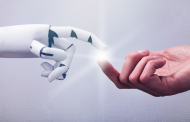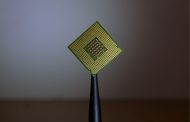Octomom: Frightening. Octobot, the first autonomous soft robot: Adorable. 3D printed by Harvard researchers from a malleable material and powered by chemical reactions, the robot moves without the use of electronics.
One of the biggest robotic design challenges today is liberating machines from the rigidity of electronic systems, especially in the case of wearables, which need to move and flex right along with the human body. To design a soft robot, engineers at Harvard’s Wyss Institute for Biologically Inspired Engineering looked to the anatomical structure of octopi, since the aquatic creatures are capable of remarkable dexterity and strength despite having no skeleton. (Octopi are a longstanding inspiration for roboticists.)
The Octobot was fabricated using a combination of 3D printing, soft lithography, and molding. Though there aren’t any electronic circuits inside of the ‘bot, it’s designed with the concept of circuitry in mind: its movements are fueled by a reaction that turns hydrogen peroxide into gas, which flows through hollow channels inside. The channels route the gas through the robot, inflating sections like a balloon—causing it to move.





